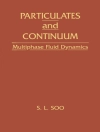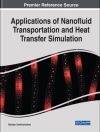This book discusses recent findings and advanced theories presented at two workshops at TU Berlin in 2017 and 2018. It underlines several advantages of generalized continuum models compared to the classical Cauchy continuum, which although widely used in engineering practice, has a number of limitations, such as:
• The structural size is very small.
• The microstructure is complex.
• The effects are localized.
As such, the development of generalized continuum models is helpful and results in a better description of the behavior of structures or materials. At the same time, there are more and more experimental studies supporting the new models because the number of material parameters is higher.
Table des matières
1 Several advantages of generalized continuum models compared to the classical Cauchy continuum.- 2 The development of generalized continuum models is helpful.- 3 The experimental efforts supporting the new models are steadily increasing.
A propos de l’auteur
Prof. Dr.-Ing. habil. Dr. h.c.mult Holm Altenbach is a member of the International Association of Applied Mathematics and Mechanics, and the International Research Center on Mathematics and Mechanics of Complex Systems (M&Mo CS), Italy. He has held positions at the Otto von Guericke University Magdeburg and at the Martin Luther University Halle-Wittenberg, both in Germany. He graduated from Leningrad Polytechnic Institute in 1985 (diploma in Dynamics and Strength of Machines). He defended his Ph.D. in 1983 and was awarded his Doctor of Technical Sciences in 1987, both at the same institute.
He is currently a Full Professor of Engineering Mechanics at the Otto von Guericke University Magdeburg, Faculty of Mechanical Engineering, Institute of Mechanics (since 2011), and has been acting as Director of the Institute of Mechanics since 2015.
His areas of scientific interest are general theory of elastic and inelastic plates and shells, creep and damage mechanics, strength theories, and nano- and micromechanics. He is author/co-author/editor of 60 books (textbooks/monographs/proceedings), approximately 380 scientific papers (among them 250 peer-reviewed) and 500 scientific lectures. He is Managing Editor (2004 to 2014) and Editor-in-Chief (2005 – to date) of the Journal of Applied Mathematics and Mechanics (ZAMM) – the oldest journal in Mechanics in Germany (founded by Richard von Mises in 1921). He has been Advisory Editor of the journal “Continuum Mechanics and Thermodynamics” since 2011, Associate Editor of the journal “Mechanics of Composites” (Riga) since 2014, Doctor of Technical Sciences and Co-Editor of the Springer Series “Advanced Structured Materials” since 2010.
He was awarded the 1992 Krupp Award (Alexander von Humboldt Foundation); 2000 Best Paper of the Year—Journal of Strain Analysis for Engineering Design; 2003 Gold Medal of the Faculty of Mechanical Engineering, Politechnika Lubelska, Lublin, Poland; 2004 Semko Medal of the National Technical University Kharkov, Ukraine; 2007 Doctor Honoris Causa, National Technical University Kharkov, Ukraine; 2011 Fellow of the Japanese Society for the Promotion of Science; 2014 Doctor Honoris Causa, University Constanta, Romania; 2016 Doctor Honoris Causa, Vekua Institute, Tbilisi, Georgia; 2018 Alexander von Humboldt Award (Poland).
Bilen Emek Abali has studied and worked on various continents, and is currently a Postdoctoral Associate at the Technische Universitaet Berlin, in Germany. He has lectured on various topics, including mechanics, composite materials, numerical methods, and multiphysics simulations at different universities. Dr. Abali’s research focuses on thermodynamical derivation of governing equations and their computation in engineering systems, especially in multiphysics applications. With distinguished scientists in several countries, he has been working on analytical solutions for verifying computations of heterogeneous materials in solids; developing and validating novel numerical solution strategies for multiphysics, including fluid structure interaction and coupled electromagneto–thermomechanical systems; investigating further theoretical methods in describing metamaterials with inner substructure; studying fatigue-related damage in metal alloys; applying mechanochemistry for a theoretical description of stresses in batteries; and also developing inverse analysis methods to characterize soft matter. For all computations, he utilizes and develops open-source packages and makes all codes publicly available in order to encourage scientific exchange.












